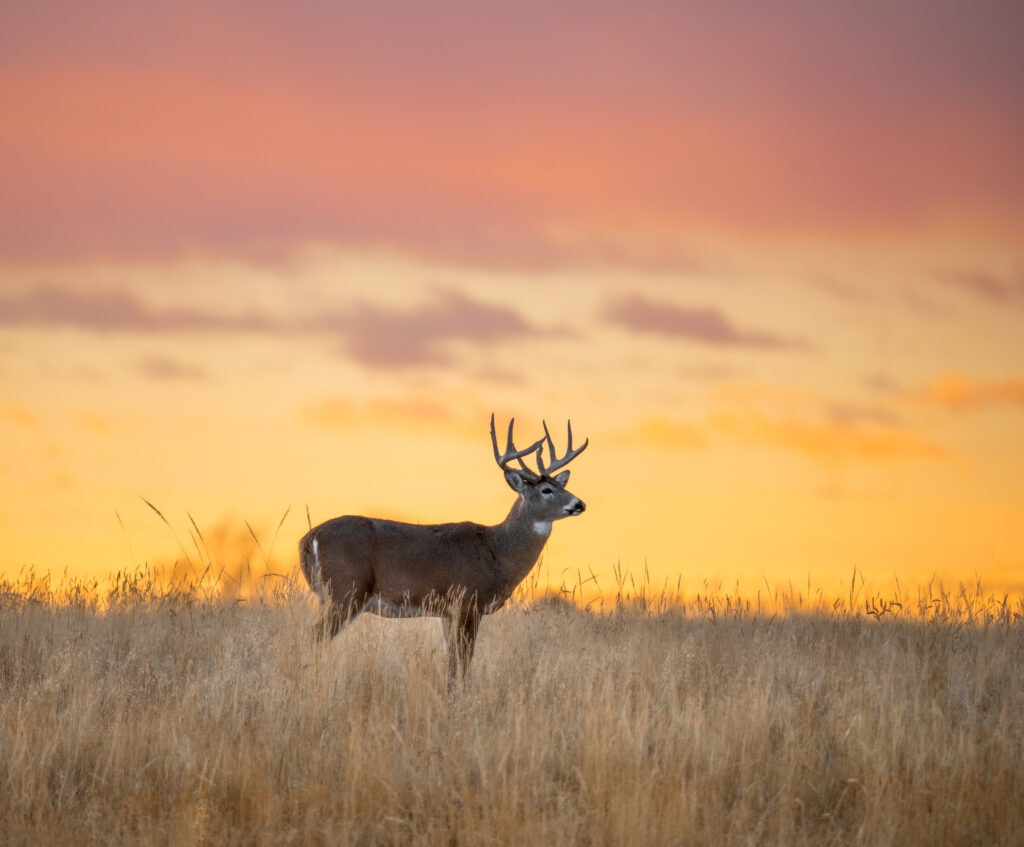Chronic Wasting Disease
Why does it matter and what can we do?
By: Dr. Chris Comer

Like many hunters and wildlife enthusiasts in North America, we here in the Department of Science-based Conservation at SCI Foundation closely follow news related to chronic wasting disease (CWD). News about CWD is rarely good, as this neurological disease continues to spread across the United States and Canada. Just in the last 12 months or so, four new states (Alabama, Idaho, Louisiana and North Carolina) and one province (Manitoba) detected CWD for the first time, bringing the total to 30 states and five Canadian provinces. It has also been detected in South Korea, Norway, and Finland. Most informed hunters know the basic facts about CWD: it is a 100% fatal degenerative neurological disease caused by misfolded proteins called prions. These prions are shed in saliva, urine, and feces and can persist for years in soil or other media. Prions infect healthy deer by causing conversion of normal proteins to new prions, and the primary mode of spread for CWD seems to be direct contact among animals and perhaps exposure to prions in the environment. All of this sounds pretty bad, but lots of scary-sounding diseases including epizootic hemorrhagic disease, anthrax, and brain worms affect wild deer and other species. Why does CWD get so much attention, including repeated calls at the federal level for additional funding of research and management? Why should SCI and our members care about this disease?
Perhaps not surprisingly, there are several reasons CWD is near the top of our list for conservation work. First, the species affected by CWD—members of the Cervidae or deer family such as white-tailed deer, mule deer, elk, and moose—include the most popular and important game species in North America. According to the USFWS Survey of Hunting, Fishing and Wildlife-Associated Recreation, over 80% of hunters in the United States reported hunting for big game in 2016, and almost 96% of big game hunters pursued deer or elk. The North American model of wildlife conservation is supported largely by hunters and anglers, and a threat to deer hunting is a potential threat to the foundation of the model itself. In a recent survey of SCI members, they listed North American cervids as their most important concern for conservation.
Second, CWD can affect deer and elk populations when prevalence in the population is high. The neurologic effects of CWD apparently increases susceptibility to many mortality sources, including predation and vehicle collision, but multiple studies have shown lower survival among CWD positive deer. Lower population growth rates have been documented in deer and elk populations affected long-term by CWD in Wyoming and Colorado.
Third, there is a small, but real, risk that CWD could affect human health. We emphasize that there is no evidence of transmission to humans occurring to date and evidence of transmission to other species like primates is controversial. However, the experience of bovine spongiform encephalopathy or Mad Cow Disease infecting about 225 people with variant Creutzfeldt-Jakob disease in the 1990s provides a cautionary example. Despite the lack of evidence for human health impacts, the CDC recommends against consuming venison from CWD-positive cervids.
Finally, management actions to control CWD can be costly and burdensome for agencies and hunters. The costs of CWD management, including testing, sample collection, research, and control actions, run into the hundreds of millions of dollars for state and provincial agencies. With limited resources, this means that less is available for other important wildlife issues like wild turkey populations or habitat management. Many management actions are also controversial and produce tension or even open conflict between fish and wildlife agencies and hunters. Bans on the use of bait and urine-based lures in CWD-affected areas have been opposed by hunter groups in several states and can affect rural economies. Similarly, targeted removals of deer in CWD areas are expensive and can alienate local hunters or landowners. Limits on movement of carcasses from infected areas may discourage hunters from traveling and generating economic activity in those areas. Prohibition of live cervid movement and depopulation of affected herds have had devastating effects on the captive cervid industry, which can be important to rural economies and land conservation (e.g., a 2017 study found that the captive deer industry in Texas contributed $1.6 billion to the state’s economy and supported almost 17,000 jobs).
Given the stakes involved, it is important for decision makers to have the best possible information about the effects of CWD management policies (both positive and negative). Government funding for CWD tends to be focused on testing and on research related to deer movements, prion chemistry, or vaccine development. At SCI Foundation, we are concerned about the practical impacts of CWD management actions. Specifically, we are working with researchers at Emory University to quantify the effects of various policies (e.g., bait bans or carcass disposal restrictions) on risk of CWD establishment and spread. Using cutting edge population modeling techniques, we can evaluate various scenarios to determine the impact of a given policy action. We are also working with the University of Georgia on a project that will help the Georgia DNR work effectively with landowners and hunters to manage CWD when it is detected in that state. Through these projects and future collaborations with leading researchers, SCI Foundation continues to address the conservation issues and questions that are most important to our members and supporters.
